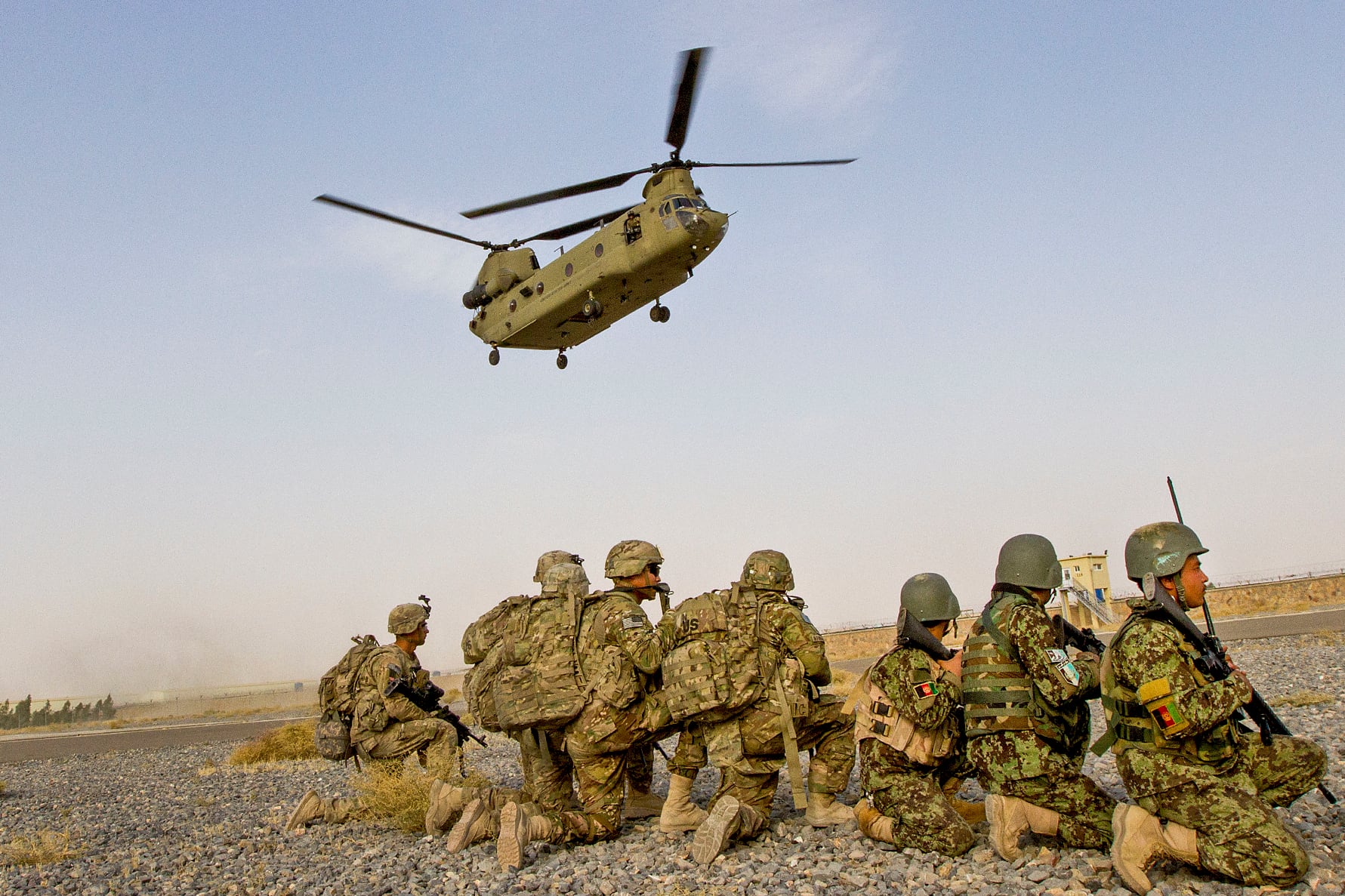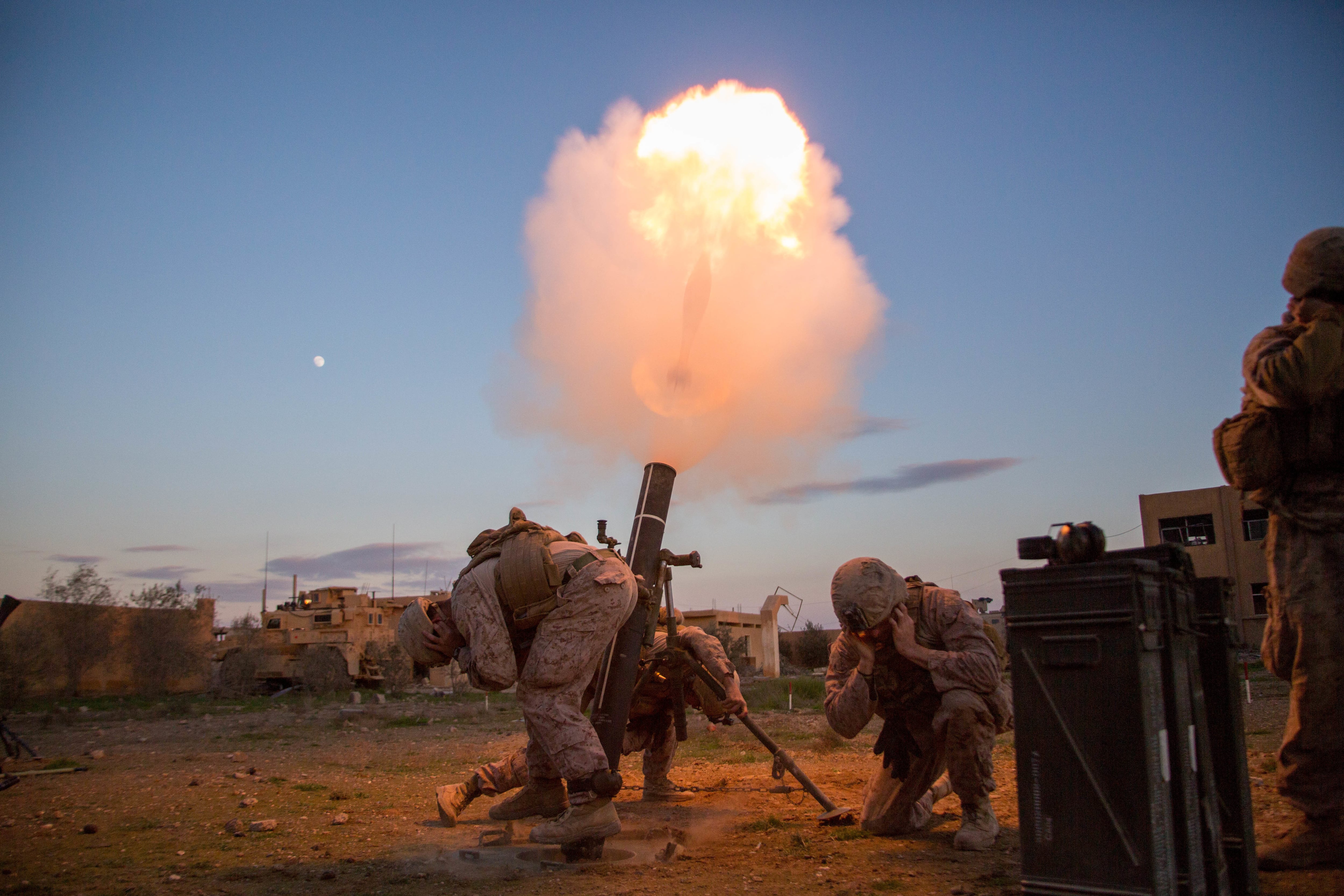Young Army leaders are suffering from America’s long wars spent building partner forces, the commander of U.S. Army Training and Doctrine Command said Monday.
Conflicts in the Middle East, where the Army has spent significant time in an advise-and-assist role for local forces, has sapped officers and enlisted alike of their confidence in making tough choices in battle, Gen. Stephen Townsend told reporters at an event hosted by the Association of the United States Army.
Townsend said he noticed the problem during briefings on the service’s mission command doctrine, which is designed to help troops on the ground adjust their original plan in combat without contacting senior leaders.
“I want you smart enough to realize the plan I gave you will not work," Townsend said of the concept. "Then I want you smart enough to come up with a plan that will work ... even if you can’t talk to me.”
“In today’s environment, with near-peer adversaries, they’re going to jam us, they’re going to spoof our C2 [command and control] systems," he said. "You might think your C2 system is working, but the icons are not showing the true grids. They’re showing what the enemy wants you to see. So, how do you work that problem? You do it with mission command.”
Mission command has been the Army’s preferred style for exercising command since the 1980s, according to Army Doctrine Reference Publication 6-0. The doctrine originates with the 19th century German military concept of Auftragstaktik, which translates roughly to “mission-type tactics.” Under this concept, the emphasis is on the outcome of a mission rather than the specific means of achieving it.

Mission command says that it’s more important for troops to understand and achieve the broader purpose of a task than to bother themselves with minutiae handed down to them from higher leadership. That way, when opportunities arise, troops will react quickly and with more efficiency.
The doctrine has six tenets: build cohesive teams through mutual trust, create shared understanding, provide a clear commander’s intent, exercise disciplined initiative, use mission orders, and accept prudent risk.
When Townsend has traveled around to Army leadership courses — like the Command and General Staff College and the Sergeants Major Academy — he has asked who in the room buys into the doctrine’s tenets.
“It’s been shocking to see how few hands go up," Townsend said. “I think it’s a function of us trying to extricate ourselves from direct leadership in these long wars in Afghanistan, Iraq and Syria, where we want our partners to do more."
RELATED

“When I went to war in Afghanistan in 2002, I didn’t feel like I was over-directed," he added. “When I fought in the surge in Iraq in 2006, I also didn’t feel like anyone was breathing down my neck. I was given a job to do, I was given an area to do it in, and I had a lot of latitude to do that.”
The focus in Middle East conflicts has largely been on training and advising local forces, pushing those fighters to lead operations and take on risky decision-making in the field. If American troops want to do anything, they have to submit “a five-paragraph field order ... or nine-slide document that we are going to brief up to a colonel or maybe a brigadier general," Townsend said.
That has become a standardized experience for young leaders coming from the Iraq and Afghanistan theaters over the last decade, according to Townsend.
“When they were deployed as lieutenants, or captains, or majors, they experienced that,” he added. “To drive a few kilometers down the road to visit their partner force unit, they had to have permission from a brigadier general and a stack of documents.”
But the Pentagon has been planning for a future battlefield that pits America against Russia or China, peer-level adversaries with modern militaries. Those states' armed forces understand the U.S. dominance in cyberspace, and are preparing ways in which they can attack the U.S. military’s traditional advantages.
It should be expected that command and control systems linking higher operations centers to field-level troops will be compromised. That’s when mission command doctrine will prove most useful.
Instilling confidence again into young leaders is part of Townsend’s plan to prepare troops for the next war.
“We have to train that way if we want to fight that way,” he said.
Kyle Rempfer was an editor and reporter who has covered combat operations, criminal cases, foreign military assistance and training accidents. Before entering journalism, Kyle served in U.S. Air Force Special Tactics and deployed in 2014 to Paktika Province, Afghanistan, and Baghdad, Iraq.





